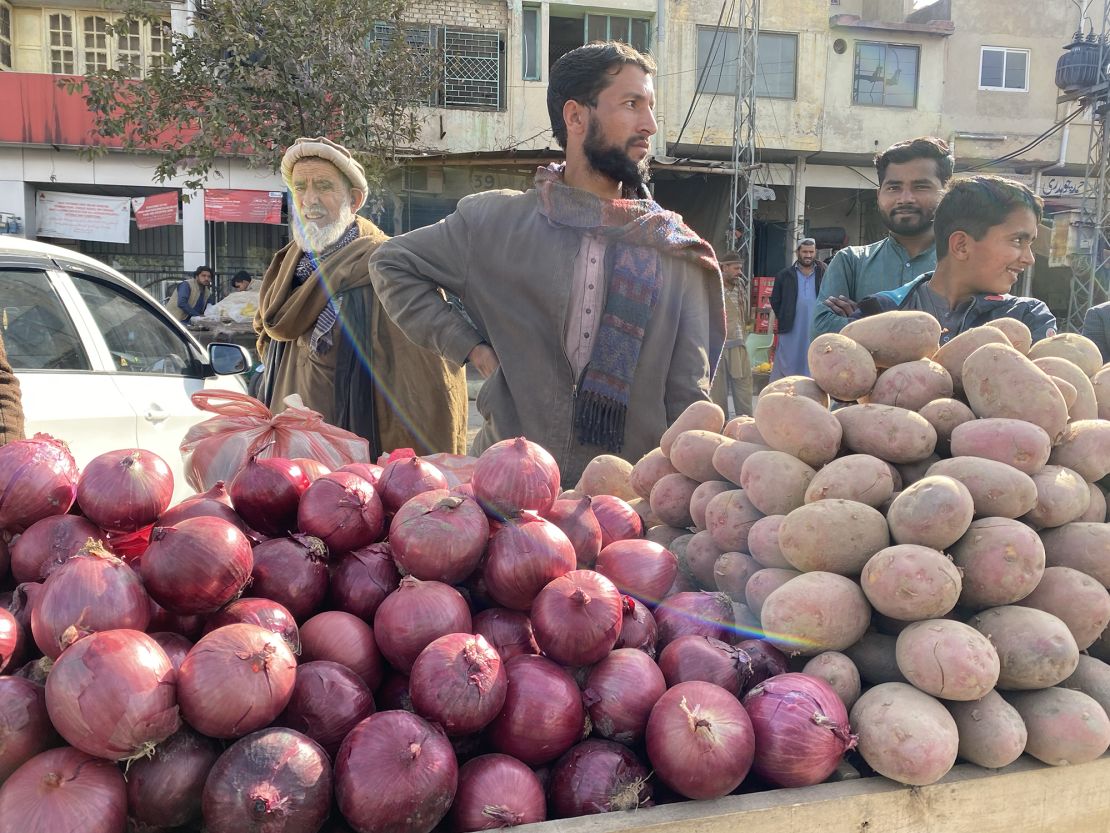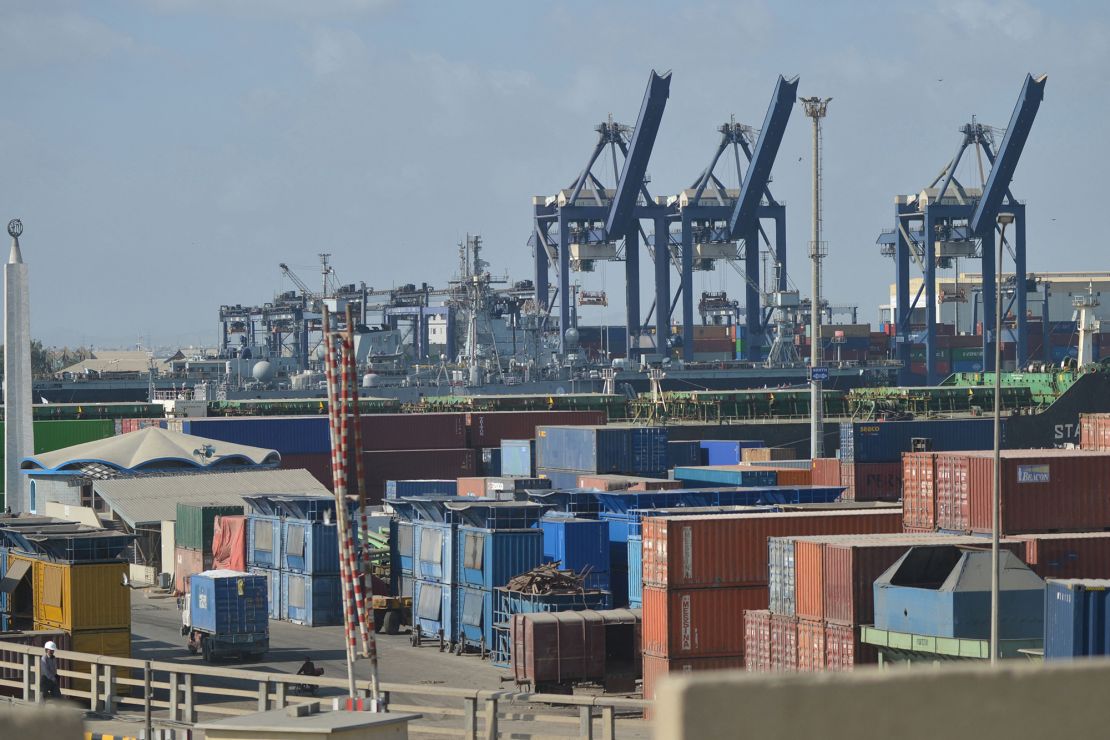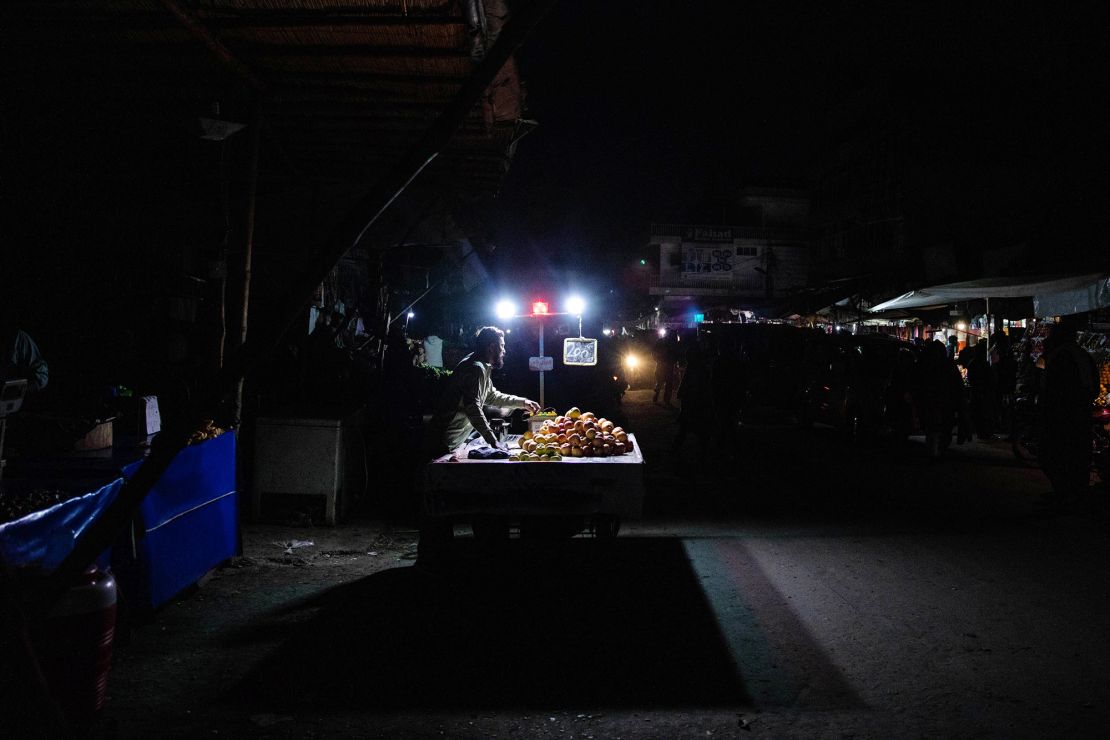Muhammad Radaqat, a 27-year-old greengrocer, is worried. He doesn’t know how much an onion will cost next week, let alone how he’ll be able to afford the fuel he needs to heat his home and keep his family warm.
“All we’re being told by the government is that things are going to get worse,” Radaqat told CNN.
His anxiety reflects the mood of a nation racing to ward off an economic meltdown. Faced with a shortage of US dollars, Pakistan only has enough foreign currency in its reserves to pay for three weeks of imports.
Thousands of shipping containers are piling up at ports, and the cost of essentials like food and energy is skyrocketing. Long lines are forming at gas stations as prices swing wildly in the country of 220 million.
A nationwide power outage last month made people even more alarmed. It brought Pakistan to a standstill, plunging residents into darkness, shutting down transit networks and forcing hospitals to rely on backup generators. Officials have not identified the cause of the blackout.

Pressure is growing on Prime Minister Shehbaz Sharif’s government to unlock billions of dollars in emergency financing from the International Monetary Fund, which sent a delegation to the country this week for talks.
Pakistan’s currency, the rupee, recently dropped to new lows against the US dollar after authorities eased currency controls to meet one of the IMF’s lending conditions. The government had been resisting the changes the IMF requested, such as easing fuel subsidies, since they would cause fresh price spikes in the short term.
“We need the IMF agreement to go through as soon as possible for us to save the ship,” said Maha Rehman, an economist and the former head of analytics at the Centre for Economic Research in Pakistan.
The making of a crisis
Pakistan is experiencing what economists call a balance-of-payments crisis. The country has been spending more on trade than it has brought in, running down its stock of foreign currency and weighing on the rupee’s value. These dynamics make interest payments on debt from foreign lenders even more expensive and push the cost of importing goods higher still, requiring even bigger drawdowns in reserves that compound the distress.
The country is also grappling with rampant price increases. The country’s central bank has hiked its key interest rate to 17% in a bid to clamp down on annual consumer inflation of almost 28%.
Some issues the country faces are specific to Pakistan. Political instability and efforts to prop up its currency, for example, have weighed on investment and exports, according to Tahir Abbas, head of investment research at Arif Habib, the country’s largest securities brokerage.
Historic floods last summer have also led to huge bills for reconstruction and aid, adding to strains on the government budget. The World Bank has estimated that at least $16 billion is needed to cope with damage and losses.

Yet global factors are making the situation worse. The economic slowdown has weighed on demand for Pakistan’s exports, while a sharp rally in the value of the US dollar last year piled pressure on countries that import significant volumes of food and fuel. Prices for these commodities had already spiked due to the pandemic and Russia’s war in Ukraine, requiring larger outlays.
The IMF has warned repeatedly that this could stress vulnerable economies. While it forecasts that emerging market and developing economies will see a modest uptick in growth this year as the dollar comes off its highs, global inflation falls and China’s reopening spurs demand, the ability to manage debt loads remains a concern.
It estimated this week that 15% of low-income countries are already in debt distress, while another 45% are at high risk of struggling to meet their obligations. An additional 25% of emerging market economies are also at high risk. Tunisia, Egypt and Ghana have all sought IMF bailouts worth billions of dollars in recent months.
“The combination of high debt levels from the pandemic, lower growth and higher borrowing costs exacerbates the vulnerability of these economies, especially those with significant near-term dollar financing needs,” the IMF wrote in its world economic outlook this week.
No easy fix as suffering grows
For Pakistan to avoid default, talks with the IMF to restart its stalled assistance program must succeed, according to investors and economists. The IMF’s delegation arrived on Tuesday and is set to stay through Feb. 9.
“Availability of the IMF loan is critical,” said Ammar Habib Khan, a senior non-resident fellow at the Atlantic Council.
But Farooq Tirmizi, the CEO of Elphinstone, a startup geared at Pakistani investors, said that even if the IMF program resumes, it won’t fix all the problems, since the main issues plaguing Pakistan are “not economic, but political, with a government in place that is not willing to make structural changes.”
Pakistan’s economic crisis was at the center of a political showdown between Sharif and his predecessor, Imran Khan, last year. Khan was ousted by a no-confidence vote in April after Sharif accused him of economic mismanagement.

The situation has remained turbulent since then. Pakistan has gone through three finance ministers in less than a year. The last two were part of the current government, raising questions about whether Sharif can hold onto power. The country is expected to hold a general election this summer.
The tumult comes as Pakistan faces a fresh wave of attacks by militants. Earlier this week, a suicide bomb ripped through a mosque in the city of Peshawar, killing at least 100 people. It was one of the deadliest attacks in the country in years.
People are suffering in the meantime. Farmers who lost cotton, date, sugar and rice crops to flooding still need help. The World Bank predicted in October that as many as nine million Pakistanis could be pushed into poverty without “decisive relief and recovery efforts to help the poor.”
High inflation is only boosting pain for households struggling to make ends meet. Food prices in January rose 43% year over year, according to data released this week.
Attention focused recently on a man in the southern province of Sindh who lost his life in a scramble to obtain a bag of subsidized flour handed out by local authorities. He was crushed to death by the crowd alongside him.
























